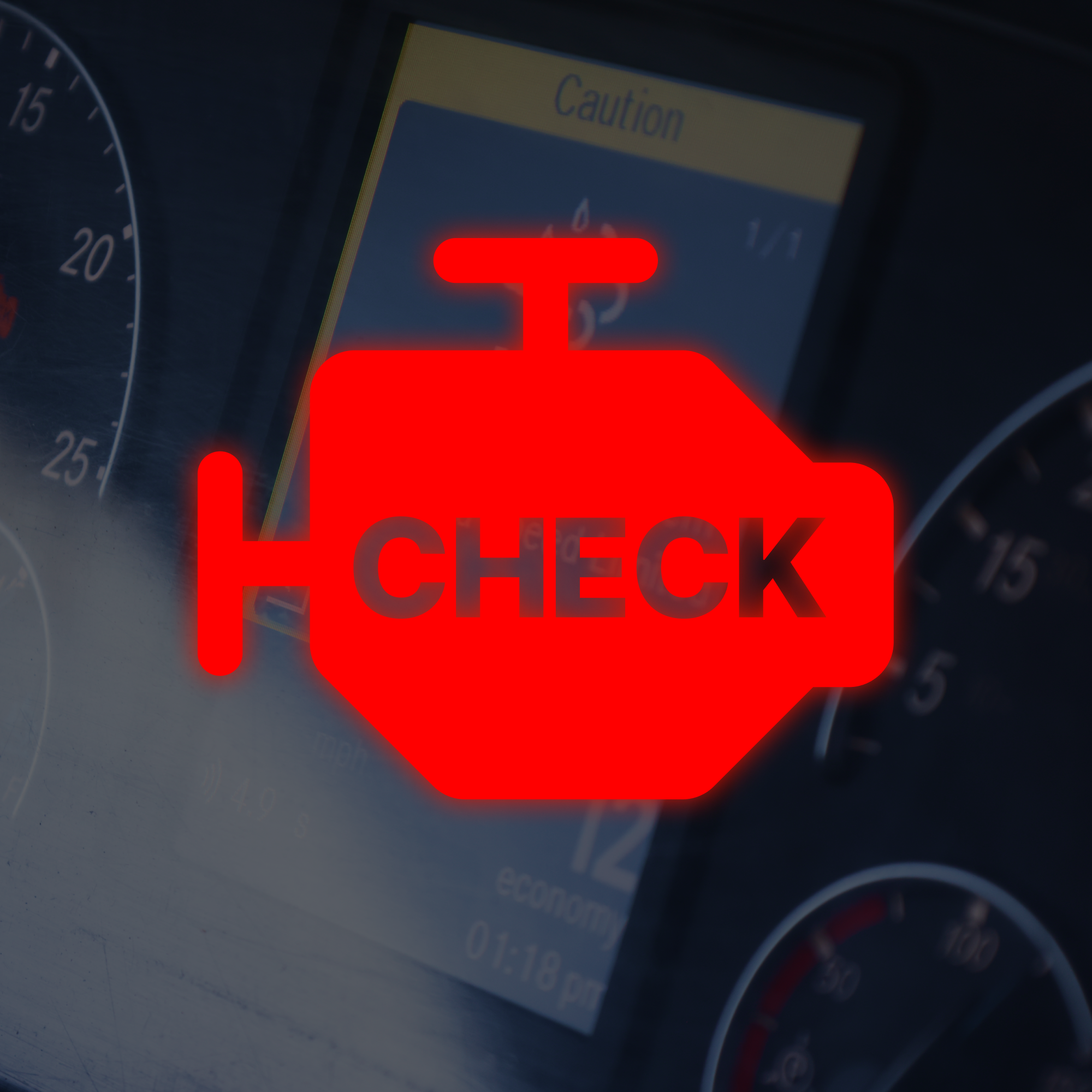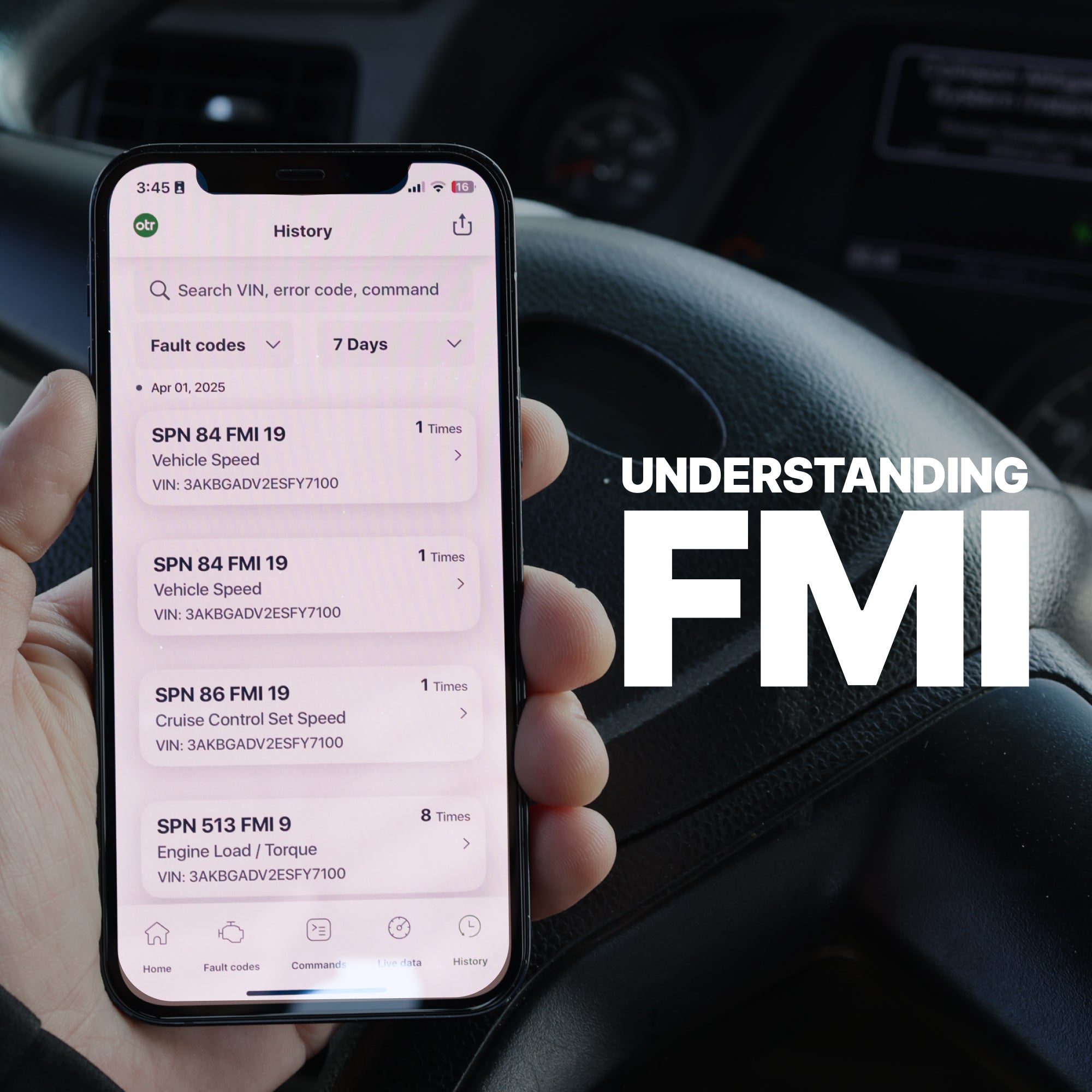As trucks have become more complicated and sophisticated, the trucking industry has gotten better and better at capturing and using relevant information for diagnosis. It makes sense, doesn’t it. There was a time when you could open the hood, find the problem, and fix it. But as the computer has played more of a role in how trucks work, we’ve needed new tools to diagnose problems and fix them.
Back in the early 1980s, vehicles were equipped with electronics and onboard computers to control many of the engine control systems such as fuel and ignition. Over time, manufacturers created more effective ways of monitoring and diagnosing electrical component issues.
Truck fault codes (now called Diagnostic Troubleshooting Codes, or DTCs) made their first appearance in 2009. They are designed to simplify the diagnostics and maintenance of increasingly complex systems.
Today, an effective truck diagnostics system uses DTCs to notify drivers and fleet management when a problem arises. These codes aren’t simply warning codes – they also tell you what the problem is. They are not as complicated as you may think and in this post we hope to clarify them for you.
Hey, We’ve Got a Problem!
A DTC not only says “Hey, there’s a problem”, but it also tells you what the problem is. Knowing what the codes mean will give you great peace of mind and the ability to take care of issues more quickly and easily.
Are Fault Codes Friend or Foe?
DTCs make many truckers uncomfortable, and for good reason. Without an easy-to-use diagnostic tool, you’re in the dark about what the codes mean. But what if you have a tool that explains them?
What if you think of them not as your enemy (“uh-oh, potential problem, stuck on the side of the road, time lost”) … but as your friends? If you see them as your guide to understanding potential issues, they’ll have a chance of becoming your friends.
Knowing how your computer detects and communicates problems will help you be successful with your truck. It will mean less downtime, less stress from being in the dark, and a more enjoyable haul overall.
Our mission at OTR Performance is to help you to understand your truck. We believe that the best way to help you do this is to give you the diagnostic tools you need and educate you on how to use them as effectively as possible. That’s why we’ve compiled this tutorial about truck fault codes.
There are just a few variables and codes that you need to understand. While they may seem complex at first, understanding their interrelationships makes them simple.
Diagnostic Troubleshooting Codes (DTCs)
DTCs are used to alert you of possible fault situations. They’re like shorthand – each DTC is comprised of four digits, and each digit contains a different type of information that tells you about the problem. These are the SPN, FMI, OC, and the conversion method.
Suspect Parameter Number (SPN)
The SPN is the fault location number. It is given to a particular part or electric subsystem to help locate a problem.
Failure Mode Identifier (FMI)
The FMI identifies the kind of error that has occurred. For example, FMI may signal an issue with the electrics.
The following is a list of FMIs:
0 - Highest
1 - Low
2 - Intermittent
3 - High Voltage
4 - Low Voltage
5 - Open Circuit Fault
6 - Ground Short
7 - System not responding
8 - Frequency abnormality
9 - Update that is out of the normal
10 - Rate of Change out of normal
11 - Other failures
12 - Complete failure
13 - Calibration out
14 - Special instructions
15 - Data valid but above the normal range
16 - Data valid but moderate-severe range
17 - Data valid but below not severe range
18 - Data valid but below moderate-severe range
19 - Network data error
20 - High drifted data
21 - Low drifted data
31 - Existing condition
Occurrence Count (OC)
The OC number indicates how many times a failure has taken place. Every time a defect transitions from an inactive to an active state, the OC is increased by one.
SPN Conversion Method
The DTC conversion method indicates how the SPN and FMI (explained above) are to be handled or translated.
Understanding DTC Codes
Recently, scan tools have been developed to take raw data from your Engine Control Module (ECM) and transform it into a more understandable format. As with anything, some scan tools are more useful than others.
Basic scanners typically transform the codes into something more familiar than raw data but provide little information about the issue. This lack of information may increase the time it takes to detect and fix an issue, resulting in higher labor expenses. It also increases the likelihood of human error (missing a code, for example), possibly causing additional system harm. And, you don't get much insight into what's actually going on.
A more advanced diagnostic tool such as those developed here at OTR Performance solves this issue by reading data and presenting definitions in an accessible manner. It also offers comprehensive descriptions for each portion of the code, making it simpler to detect and solve issues.
Not All DTC Codes Are Critical
With so many common and factory DTC codes, even some experienced technicians struggle to comprehend them all. But it’s good to know that while some of the codes are critical, some are not.
Critical codes indicate an issue that may cause serious damage. For example, high engine temperatures and low coolant levels may indicate impending engine failure.
Not so critical codes indicate an issue that needs attention. Malfunction Indicator Lamp or Check Engine Light codes are non-critical codes.
Reading DTC Codes
As a driver, you want to be able to understand the meaning of any code. An easy to use, dealer-level diagnostics tool will tell you exactly what you need to know.
DTC codes are five digits (P0303 for example). The five-character code describes the malfunctioning vehicle system, and you can even decipher the code by looking at its characters.
We’ll use the DTC example of P0303.
What Example Code P0303 is Telling You
The First Letter - P
The DTC code starts with a P, C, B or U. These letters show which part of the vehicle has a problem.
P – Powertrain, which denotes the transmission, engine, and accessories
C – Chassis is for mechanical systems such as steering, braking, and suspension
B – The body, mainly in the passenger compartment
U – Truck and network inter-connections
So, Code P0303 is telling you that the issue is with your powertrain.
The Second Digit - 0
The second digit is typically 0 or 1. The 0 means it’s a standard code; the 1 means it’s a specific manufacturer’s code.
So, Code P0303 is telling you it’s a standard code.
The Third Digit - 3
The third digit advises you which vehicle subsystem has a problem. The 7 most common are:
0 – Measurement of fuel and air emission controls
1 – Air and fuel control measurements
2 – Controls of fuel and air in the injector circuit
3 – Ignition or misfires
4 – Emission controls
5 – Speeding and idling controls
6 – Computer circuit system
7 – Transmission
So, Code P0303 is telling you that the problem relates to ignition or misfires. (There are other codes; refer to your manufacturer's guidelines as needed).
The 4th and 5th Digits - 03
A DTC ends with a number that describes the exact problem. For example, it may be 0 to 99. This is the fault description and identifies the specific problem. There are hundreds of these.
So, Code P0303 is telling you that a Cylinder 3 misfire has been detected.
Stay One Step Ahead!
Without a diagnostic tool, such as OTR Diagnostics, you're left in the dark as to what a fault code is saying. Truckers often tell us it’s a stressful, helpless feeling, one that impacts their job satisfaction and ability to take care (and control) of their trucks.
Fleet managers without advanced diagnostics are equally at risk, having to depend on drivers or others to communicate codes. As a result, they are often not aware of serious maintenance issued, which can escalate.
When you know your DTC fault codes and what they relate to, you can stay in control of your truck or fleet. You can also notify mechanics of problems, so they know what faults a truck has before it arrives and can handle them more efficiently.
If you are looking for a diagnostic troubleshooting system, check out OTR Diagnostics. We provide you with the ability to conduct sophisticated diagnostics more easily and quickly than you ever thought possible.
Till next time, stay safe and be blessed!




What is an aftertreatment system? (...and why should I care?)
Parked Regen Won't Start - 3 Things To Do